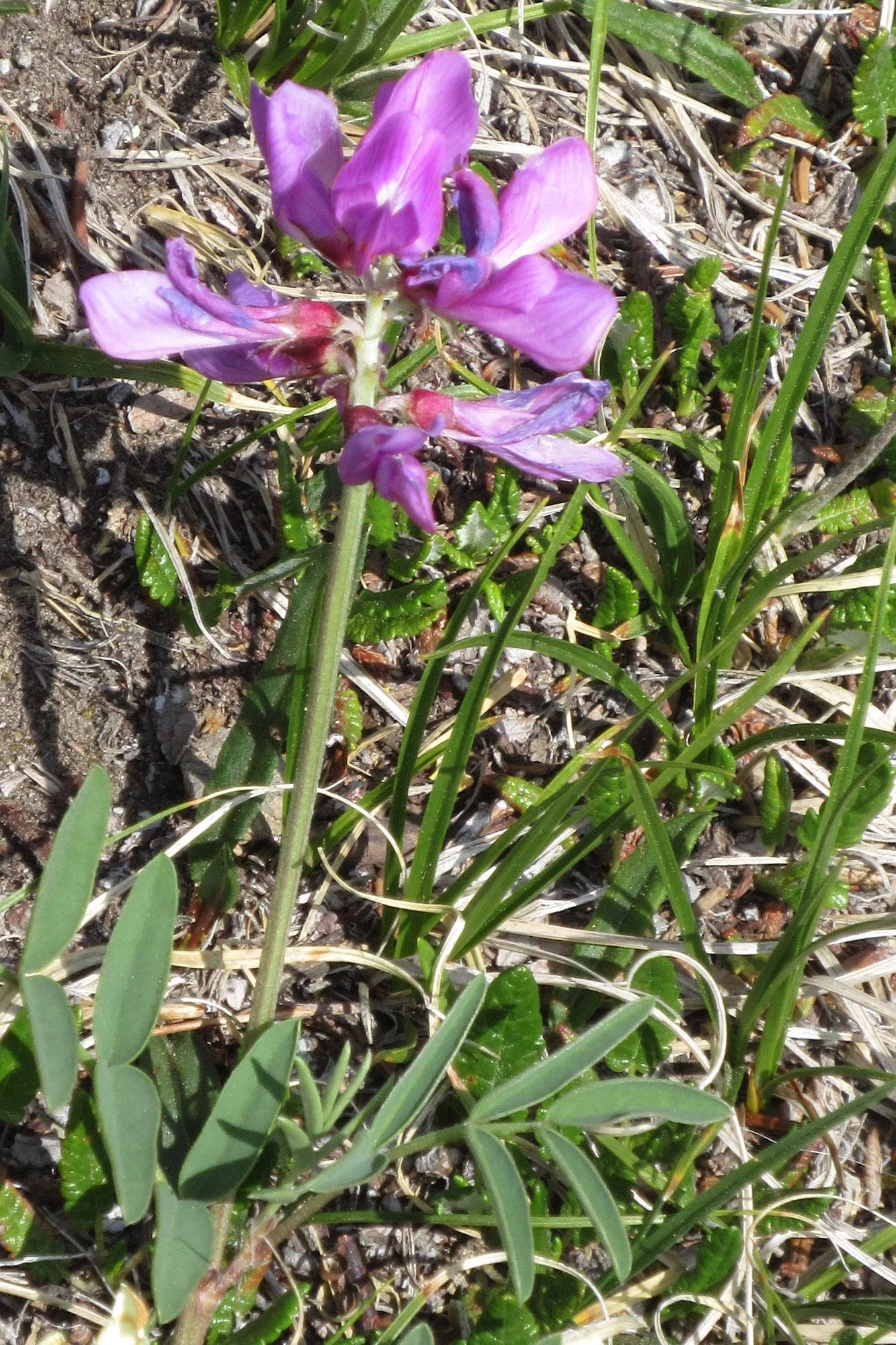What are the Bears eating today?
by Derek Ryder, Wildlife Ambassador & IGA Interpretive Guide
Ask most folks what a bear’s favourite food is, and “berries” are always among the top answers. But it’s not berry season yet, and won’t be until later this month. The Dandelions are starting to go away (even in my neighbour’s yard). Between the end of Dandelion season & the core of berry season, bears start to take advantage of the roots of the fresh growing plants.
Grizzly bears in particular are diggers; that's where those super big claws and that big shoulder muscle that forms the hump come in handy. Bears dig for a lot of food and leave a lot of evidence that they have been digging. The photo is of a black bear dig I found at this time of year in 2020. But what are they digging for?
One of the plant families they like is the pea family. The common name of the most popular food is Sweet-Vetch, with the Latin family name Hedysarum. Grizzlies LOVE to dig for the roots of these plants, especially in the spring and fall outside of berry season. In central BC, where there are fewer berries, studies have shown Hedysarum is actually their main summer food source. The picture to the left is Hedysarum. Like most patches of Hedysarum you’ll find in the alpine, it had old bear digs next to it.
We have several types of Hedysarum, and they get a bit confusing with all the names (Northern, Mackenzie, Utah, Yellow, Alpine and Western are just some of the varieties here). You can generally call them all Sweet-Vetch.
Grizzlies in particular have two they like, and you should get to know what those two look like. The purple ones in the photo above are Northern Sweet-Vetch, h. borale, the most common species in the alpine. They are hands down, a Grizzly favourite. We also have Yellow Sweet-Vetch, h. sulphurescens, which is similar, but are whitish-yellow flowers, and lives at lower elevations. They are pictured at right.
Another member of the pea family that they eat occasionally are some of the many species of Milkvetches. That’s the common name for a large group of pea-like plants in the Astralagus family. Bears, especially grizzlies, don’t eat Milkvetches nearly as much (they appeal more to Black Bears), but they’ll do in a pinch. You’ll find a lot of Milkvetch species in the Bow Valley, so worthwhile learning to differentiate it from actual Hedysarum species. Yet another Vetch to look for is an introduced escapee from agriculture: Cow Vetch, Vicia cracca. You can see purple Cow vetch flowers to the left. They look a LOT like a purple version of Yellow Sweet-Vetch.
Most Vetches are somewhat vine-like, with massed, droopy small flowers on a long, straight stem. Northern Sweet-Vetch grows in patches and isn’t usually that tall. Yellow Sweet-Vetch tends to grow more solitarily. My street has a HUGE strip of Yellow Sweet-Vetch on it, as you can see in the picture to the right. Later in the season (around mid-August) these plants will show their heritage and put out pea pods, and those are edible too. But bears like plants with DENSITY (lots of food in a small space means less work). There can be several hundred tasty roots on my street, but there will never be that many pea pods. While they might eat the pea pods, it’s generally not worth their effort.
Bears aren't the only ones who like Vetch roots; the Indigenous peoples of North America ate Hedysarum. Sweet-Vetch can be eaten raw (they have a bit of a sweet, liquorice like flavour), boiled, baked, or fried -- and then they taste like carrots. The Yellow variety is not nearly as tasty to us, so look for the Northern or Alpine subspecies (but no picking plants in the Parks). But make sure to differentiate them from the Milkvetches. Timber Milkvetch, for example, is poisonous.
Click here to find out ‘What the bears are eating’ in other months!

